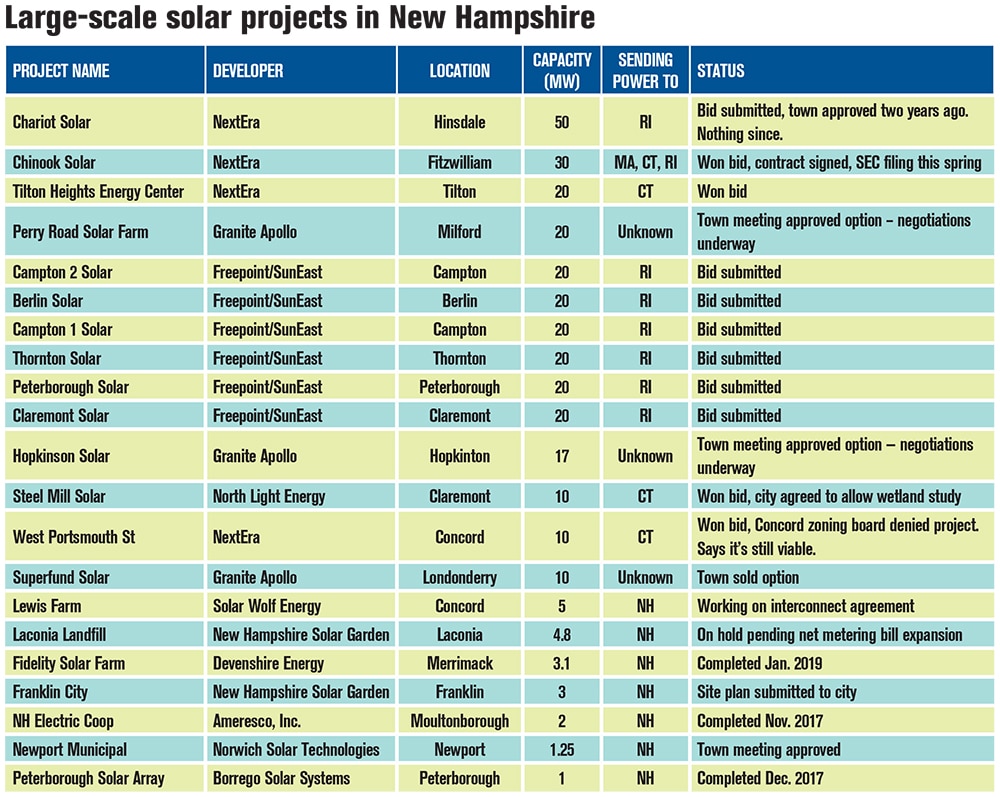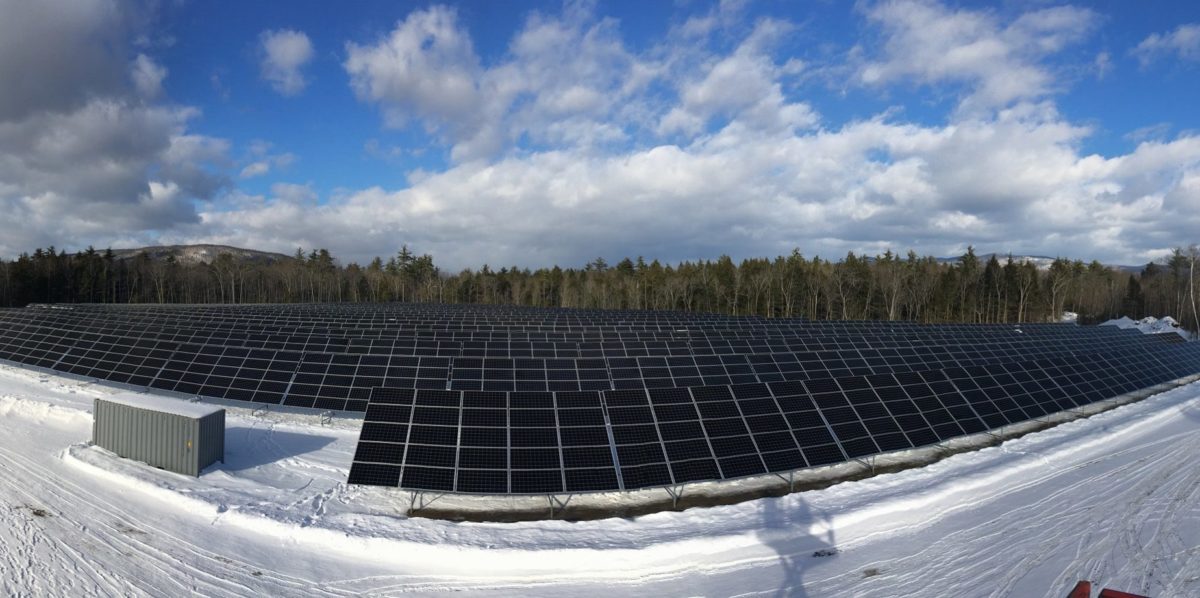One must wonder if New Hampshire, after seeing the large size of Vermont’s demand charge savings, has its own peaker envy.
The New Hampshire House & Senate have sent a veto-proof increase to 5 MWac in the capacity of systems that can quality for net metering to the governor’s office to sign. As well, the Senate has passed, and the House is currently reviewing, a bill that will start the process of the state getting 15% of its peak demand from energy storage resources.
Concurrently with the legislative pushes, are increases in solar power that is being built in the state, but not necessarily for the state. Per coverage by Bob Sanders of the local NH Business Review, there is more than 215 MWac (below image) in the state’s queue.

NextEra Energy has two projects totaling 80 MWac of capacity in the pipeline, one of which is the 30 MW Chinook Solar Project in Fitzwilliam that has power purchase agreements bid into Rhode Island, Massachusetts and Connecticut with a two-year delayed completion date scheduled for the end of 2021.
The net metering legislation also has language that doesn’t allow net metered solar electricity to be resold into the ISO New England regional market, as state legislatures wanted to protect in-state electric consumers. The report from the Public Utilities Commission of the state noted that there were 25 projects in the state with a nameplate capacity between 1 and 5 MWac that, once they “no longer have a capacity commitment with ISO-NE or are no longer a registered generator with ISO-NE”, could shift to net metering status. However it was noted that this process takes a long time and wouldn’t have an effect until after fiscal year 2023.
The energy storage legislation first seeks to set up a commission by the end of 2019, that will set in process at least two energy storage pilot projects per utility by the end of 2021. Concurrently, this commission will start a proceeding to determine if an energy storage target, or goal of reducing the state’s peak demand by a specific percentage of up to 15% when discharging coincidentally, would provide net financial benefits to ratepayers.
If it finds that this creates such a financial benefit, some goal – or the 15% specifically – will be set to be met by 2030. The legislation also notes that if it can be done competently, then at least half of the energy storage will be procured by non-utility actors.

Per the ISO New England (pdf), New Hampshire has roughly 84 MWac of solar in 8,231 systems as of the end of 2018, with 14 MWac of that capacity installed in 2018. The state met about 0.6% of its electricity needs via solar in 2018.
The state’s current largest solar power plant is the 2.0 MWac / 2.6 MWdc Multonborough Solar Project, owned by the New Hampshire Electric Co-op.
This content is protected by copyright and may not be reused. If you want to cooperate with us and would like to reuse some of our content, please contact: editors@pv-magazine.com.








By submitting this form you agree to pv magazine using your data for the purposes of publishing your comment.
Your personal data will only be disclosed or otherwise transmitted to third parties for the purposes of spam filtering or if this is necessary for technical maintenance of the website. Any other transfer to third parties will not take place unless this is justified on the basis of applicable data protection regulations or if pv magazine is legally obliged to do so.
You may revoke this consent at any time with effect for the future, in which case your personal data will be deleted immediately. Otherwise, your data will be deleted if pv magazine has processed your request or the purpose of data storage is fulfilled.
Further information on data privacy can be found in our Data Protection Policy.